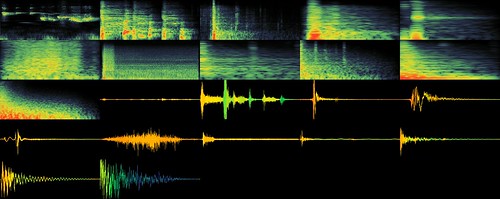-
1
Mar
I’ve been working on authoring a Flash-based learning object using Articulate Engage for one of my grad classes over the past couple of days. During the development phase, I knew I wanted to include a couple of brief video segments to provide multi-modal opportunities to present the content. The one thing I wasn’t crazy about was using my voice for the narration. Sure I could, but the fact of the matter is I’m not really that crazy about listening to my voice over and over again during the editing process. As an alternative, I decided to experiment with using Text-to-Speech software.
For those who need a little background, Wikipedia provides this information about Text-to-Speech (TTS):
A text-to-speech (TTS) system converts normal language text into speech…An intelligible text-to-speech program allows people with visual impairments or reading disabilities to listen to written works on a home computer. Many computer operating systems have included speech synthesizers since the early 1980s.
Knowing that my Mac OS X v10.5.8 had a TTS option built-in, I was ready to dive in. A quick background search on how to create TTS audio files led me to CK’s Text-to-Speech to MP3 v0.93, a freeware program that was compatible with my OS. Below you’ll find more information about the program and a short screencast that will take you through the steps I used to create my mp3 files.
CK’s Text-to-Speech to MP3 v0.93
- Freeware utility that works in conjunction with Mac OSX Text-to-Speech system voices to create .mp3 and .aac files.
- Makes an MP3 file from any text that you have selected and copied on to your clipboard.
- Automatically uses the OSX Macintalk system voice that you have selected as your default.
- Automatically uses your MP3 encoding preferences that you have set in iTunes.
Creating an audio file
- Download CK’s Text-to-Speech to MP3 – 0.9 3 .dmg file.
- Copy folder to Macintosh HD–>Applications folder.
- Highlight a selection of text from a document or web page and copy it (command+C or use Edit menu item).
- Click the “Clipboard to MP3” application in your dock, or double-click the icon from the Applications folder.
- File processing will begin to: write an AIFF file; convert the AIFF file to an MP3 file using iTunes default settings; move the temporary AIFF file to your trash.
- Completed MP3 file is located in iTunes. You can find the new MP3 file by creating a smart playlist with “artist” contains “Macintalk”
CK’s Text-to-Speech to MP3 from Jeremy Brueck on Vimeo.
Photo Credit: Cool audio waves by Iwan Gabovitch on Flickr
- Published by brueckj23 in: Raised Digital
- If you like this blog please take a second from your precious time and subscribe to my rss feed!


Leave a Reply